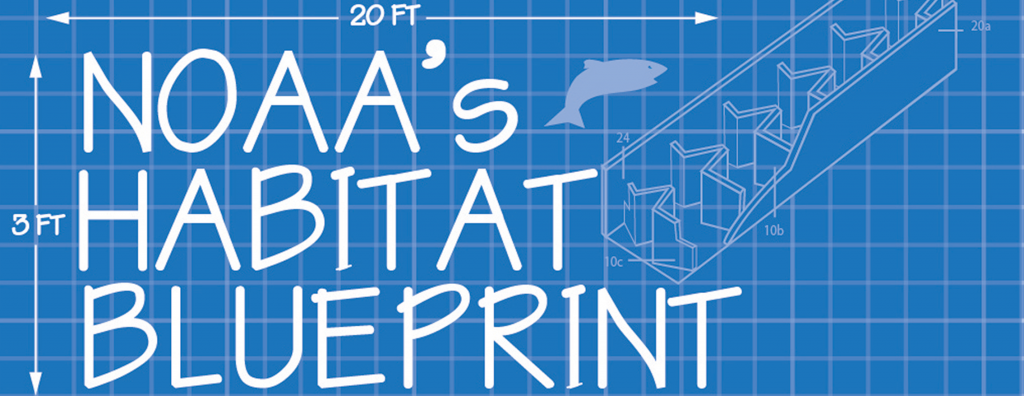About Habitat Blueprint
What is the NOAA Habitat Blueprint?
The Habitat Blueprint is a forward-looking framework that outlines how NOAA thinks and acts strategically across programs and with partner organizations to more effectively address the growing challenge of coastal and marine habitat loss and degradation. NOAA improves habitat conditions that support fisheries, coastal communities, and marine life, and provide environmental, economic, and cultural benefits.
The Habitat Blueprint builds on existing programs, prioritizes activities, and guides future actions to protect and restore habitat. Simply put—we are improving the way we do business.
Vision
Healthy habitats that sustain resilient and thriving marine and coastal resources, communities, and economies.
Approach
The Habitat Blueprint has a three-pronged approach:
- Apply a place-based approach to habitat conservation to focus and prioritize resources for the greatest impact. NOAA directs its expertise, resources for science, and on-the-ground conservation efforts in targeted areas to maximize its investments and the benefits to marine resources and coastal communities. This includes establishing NOAA Habitat Focus Areas (HFAs) to prioritize long-term habitat science and conservation efforts.
- Implement a systematic and strategic approach to habitat science to inform effective decision-making. NOAA prioritizes science and uses an integrative approach for planning and conducting quality habitat protection and restoration.
- Strengthen policy and legislation at the national level to enhance NOAA’s ability to achieve meaningful habitat conservation. NOAA strives to remove barriers and seize opportunities to improve our policies, regulations, and legal authorities. This ensures habitat considerations are an integral part of marine and coastal resource management and strengthens NOAA’s habitat conservation focus overall.
Outcomes
- Sustainable and abundant fish populations.
- Recovered threatened and endangered species.
- Protected coastal and marine areas and habitats at risk.
- Resilient coastal communities.
- Increased coastal/marine tourism, access, and recreation.

